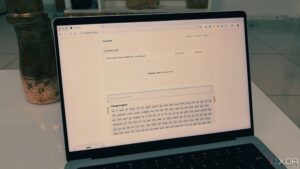
In response to a recent wave of immigration enforcement actions, residents in South Los Angeles and Chicago are coming together to build multiracial solidarity against U.S. Immigration and Customs Enforcement (ICE). Following the detention of a local tamale vendor and her family members in June, a diverse group of neighbors organized a march and vigil, demonstrating their collective grief and commitment to protecting one another.
The vigil, attended by community members from various racial and ethnic backgrounds, served as a poignant reminder of the need for unity against federal immigration agents. One speaker emphasized, “This cement, this corner needs transformation,” highlighting the urgency for cultural pride and communal action amid ongoing ICE activities.
Building Solidarity Through Community Action
In the weeks following the initial arrests, residents began meeting in backyards and community spaces to develop protective strategies and reclaim their streets. According to Enrique Gaspar, an organizer with the anti-poverty group Community Coalition, solidarity has become a daily practice as families confront the reality of federal raids. “We made a plan to protect ourselves,” Gaspar stated in Spanish, emphasizing that “an attack against one of us is a strike against all of us.”
The “reclaim our streets” campaign has led to efforts to educate immigrants about their legal rights and support those affected by ICE raids. Neighbors are also working together on broader issues like rent control, demonstrating a commitment to mutual aid that transcends racial identities. “We’re a multiracial coalition working for a better place to live,” Gaspar added, pointing out that the struggles faced by their community are interconnected.
South Los Angeles, traditionally a Black neighborhood, has seen significant demographic shifts over the years, leading to both challenges and opportunities for collaboration. As public services declined and gentrification increased, residents began to see the value in uniting for mutual support.
The Broader Impact of Immigration Enforcement
The impact of immigration enforcement on Black communities is significant. While Black immigrants make up only 5.4 percent of the undocumented population in the United States, they account for 20 percent of those facing deportation due to criminal convictions, according to analysis from the Black Alliance for Justice Immigration. This illustrates a troubling reality: immigration enforcement disproportionately affects Black individuals, many of whom are also navigating the complexities of systemic racism and police violence.
Members of the Black Alliance for Justice Immigration, including an activist known as Maraky, emphasize that the ICE dragnet creates vulnerabilities for all Black individuals. “Immigration enforcement is an extension of anti-Black policing,” Maraky explained, advocating for a unified approach to combat the shared challenges faced by Black and Latine communities.
Additionally, Joan Agoh, an organizer with the Black Alliance for Peace, connects the historical context of racial violence to current immigration practices. She draws parallels between ICE arrests and the long history of policing Black individuals in the United States, reminding community members that their struggles are intertwined.
“These struggles are deeply connected,” Agoh stated, highlighting the need for solidarity across communities to confront systemic injustices.
Creating Lasting Connections
In Chicago, similar efforts are underway to foster connections between Black and Latine residents. At La Tiendita, a community resource center located in an African Methodist Episcopal church on the South Side, residents are breaking down language barriers and building relationships. Volunteers from both communities work together to provide essential supplies to those in need.
Porsha Weekly, a local resident and volunteer, initially felt hesitant about La Tiendita’s operations but has since embraced the initiative, recognizing the shared needs of residents regardless of their backgrounds. “We see community and love and giving,” she reflected, emphasizing the importance of collaboration in times of crisis.
As the Trump administration’s immigration enforcement actions escalate, the necessity for unity among communities of color has never been clearer. Organizers like Eva Maria Lewis, founder of the violence prevention nonprofit Free Root Operation, are advocating for consistent solidarity efforts, emphasizing that “who else is going to look out for us?”
The collective response to these challenges is not without its complexities. Historical tensions and anti-Black sentiment can hinder progress. However, as community members engage in self-reflection and build trust, they are finding common ground. Weekly noted, “I grew from that,” acknowledging her journey toward understanding and collaboration.
As Black and Latine residents face increasing pressures from both immigration enforcement and local policing, their evolving relationships serve as a testament to the power of solidarity in the struggle for justice and equality. The ongoing work of these communities showcases the importance of standing together in the face of adversity, creating a shared vision for a better future.






